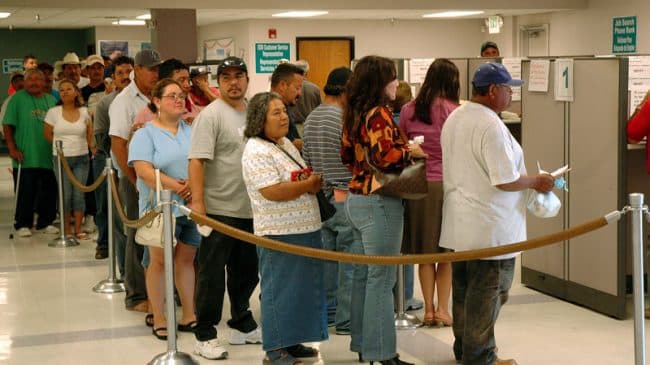In case you missed it with a burger belly and hangover from a long day of patriotic festivities, the June (un)employment report was released last Friday morning with little fanfare. The lack of inspired commentary isn’t surprising — the new unemployment numbers are largely unchanged, reflecting yet another month of just enough economic activity to keep the country humming above negative growth levels but not enough to be considered a robust recovery. But the fact that we keep getting similar, limp labor market reports is interesting in and of itself.
First, let’s consider the headline numbers: official unemployment (U3) was unchanged at 7.6% from May to June. However, the more accurate measure of unemployment (U6) that includes workers who have recently been dropped from the labor force actually increased dramatically from 13.8% to 14.3%. In relative terms, that is a movement not seen in many, many months. As the below figure shows, the last few employment reports were more mild for U6:
This increase is an indication that the jobs created and filled over the past few months are not the type of full time jobs that are going to get the unemployed back on their feet. Some headlines pointed to the 195,000 jobs added as a sign of “steady” growth, but there can be no real growth as long as the U6 unemployment number remains high. More revealing than the number of nominal jobs added in June is the fact that the number of discouraged workers in June was 1 million workers — up 20% from last year in June.
Ideally, we want the U3 unemployment number to rise in the short-term because workers are re-entering the labor market and increasing the labor force portion of the unemployment ratio. Then as the number of unemployed is reduced relative to a larger labor force we want to see the U3 number come back down again. But a persistently high U6 number while U3 remains in the mid 7% range means a new normal of high unemployment and even higher underemployment is assimilating into our culture.
Second, sharper reflections of where the labor market is trending remained unexciting speaking to the depth of how bad job prospects are for the unemployed. Both the labor force participation rate and the employment population ratio (which we discussed last month) technically improved by a tenth of a percentage point in June compared to May. But don’t get too excited — as the next figure shows both measures are still terribly low. Bureau of Labor Statistics data has a pretty high margin of error and a 0.1 percentage point shift is statistically insignificant. In practical terms the numbers remain the same as the last few months.
For those that do see a glimmer of light in the 0.1 percentage point increase in labor market participation, consider that if we continued at that monthly pace it would take 4 years for the employment-population ratio to get back to its pre-recession level and over 2 years for the labor force participation rate to bounce all the way back.
Finally, the persistent bland reports suggest that the jobs being added aren’t very desirable jobs. The most significant part of the June report was the continued upward trend in part-time jobs being added instead of full-time work. Since March of this year the number of people working part time “for economic reasons” — meaning people who have to take a part-time jobs to pay the bills — has increased from 7.6 million to 8.2 million.
There is a disparate range of reasons for this, some cyclical, but others structural. Some companies feel uncertain about the future for tax or regulatory reasons and are less likely to add full-time jobs. This can change with time. However, some employers are only hiring part-time workers to avoid coming Obamacare requirements and fees. Still others have figured out how to be more productive with less labor as a result of the economic downturn and just don’t need the same amount of workers. These are more structural. The first because Obamacare isn’t going away any time soon. The second because the labor market is largely educated for yesterday’s labor needs and human capital is in serious need of learning to adapt to future labor demands.
This is not to suggest we can’t be optimistic about the future. Part of the challenge of analyzing the unemployment rate is that the numbers reflect an inconsistent labor market. Some sectors are like fireworks shining bright in the sky, like health care, computer systems design, and information technology. Others just can’t get fully launched off the ground, like hospitality (which has seen rising unemployment numbers over the past year), manufacturing (which has improving unemployment numbers but a shrinking role in the U.S. economy), and construction (which also has been improving but still has one of the highest unemployment rates of any industry).
If growth continues in sectors like health care and IT there may very well be a positive turn for unemployment. But if hopes for manufacturing jobs to coming roaring back continue to hold the labor market to the ground, and human capital doesn’t adapt to the future, then our present new normal for unemployment may no longer appear so “new” anymore



